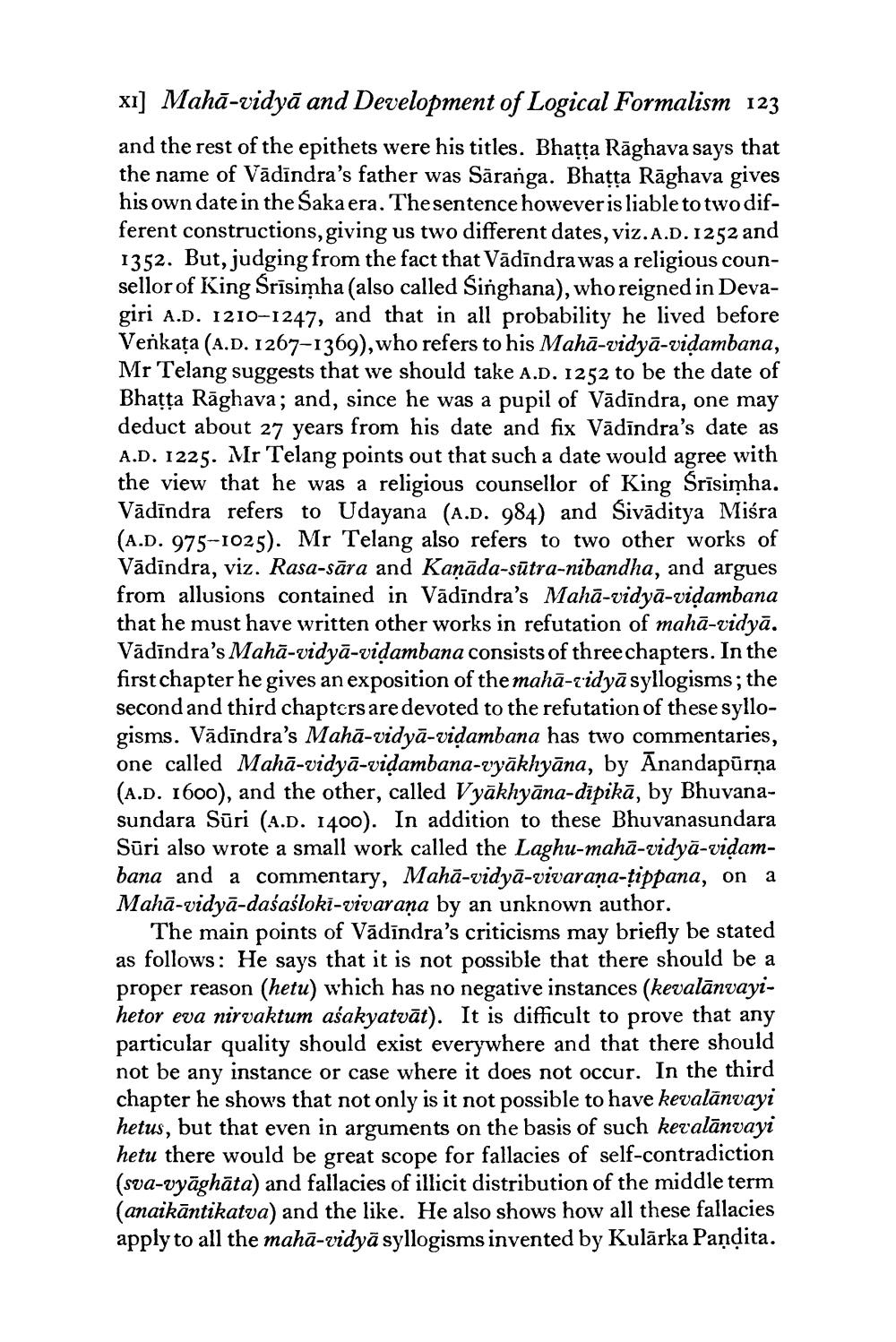________________
xi] Mahā-vidyā and Development of Logical Formalism 123 and the rest of the epithets were his titles. Bhatta Rāghava says that the name of Vādīndra's father was Sāranga. Bhatta Rāghava gives his own date in the Saka era. Thesentence however is liable to two different constructions, giving us two different dates, viz.A.D. 1252 and 1352. But, judging from the fact that Vādīndra was a religious counsellor of King Srīsimha (also called Singhana), who reigned in Devagiri A.D. 1210-1247, and that in all probability he lived before Venkata (A.D. 1267-1369), who refers to his Mahā-vidyā-vidambana, Mr Telang suggests that we should take A.D. 1252 to be the date of Bhatta Rāghava; and, since he was a pupil of Vādīndra, one may deduct about 27 years from his date and fix Vādīndra's date as A.D. 1225. Mr Telang points out that such a date would agree with the view that he was a religious counsellor of King Srīsimha. Vādīndra refers to Udayana (A.D. 984) and Sivāditya Misra (A.D. 975-1025). Mr Telang also refers to two other works of Vādindra, viz. Rasa-sāra and Kaņāda-sūtra-nibandha, and argues from allusions contained in Vādīndra's Maha-vidyā-vidambana that he must have written other works in refutation of mahā-vidyā. Vādīndra's Mahā-vidyā-vidambana consists of three chapters. In the first chapter he gives an exposition of the mahā-ridyā syllogisms; the second and third chapters are devoted to the refutation of these syllogisms. Vādindra's Mahā-vidyā-vidambana has two commentaries, one called Mahā-vidyā-vidambana-vyākhyāna, by Anandapūrņa (A.D. 1600), and the other, called Vyākhyāna-dipikā, by Bhuvanasundara Sūri (A.D. 1400). In addition to these Bhuvanasundara Sūri also wrote a small work called the Laghu-mahā-vidyā-vidambana and a commentary, Mahā-vidyā-vivarana-țippana, on a Mahā-vidyā-daśašloki-vivarana by an unknown author.
The main points of Vādīndra's criticisms may briefly be stated as follows: He says that it is not possible that there should be a proper reason (hetu) which has no negative instances (kevalānvayihetor eva nirvaktum aśakyatvāt). It is difficult to prove that any particular quality should exist everywhere and that there should not be any instance or case where it does not occur. In the third chapter he shows that not only is it not possible to have kevalānvayi hetus, but that even in arguments on the basis of such kewalānvayi hetu there would be great scope for fallacies of self-contradiction (sva-vyāghāta) and fallacies of illicit distribution of the middle term (anaikāntikatva) and the like. He also shows how all these fallacies apply to all the mahā-vidyā syllogisms invented by Kulārka Pandita.




